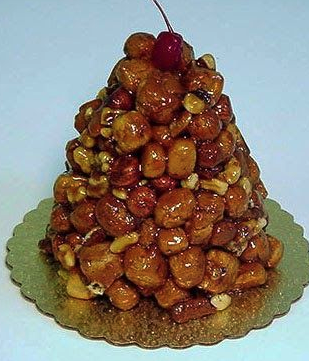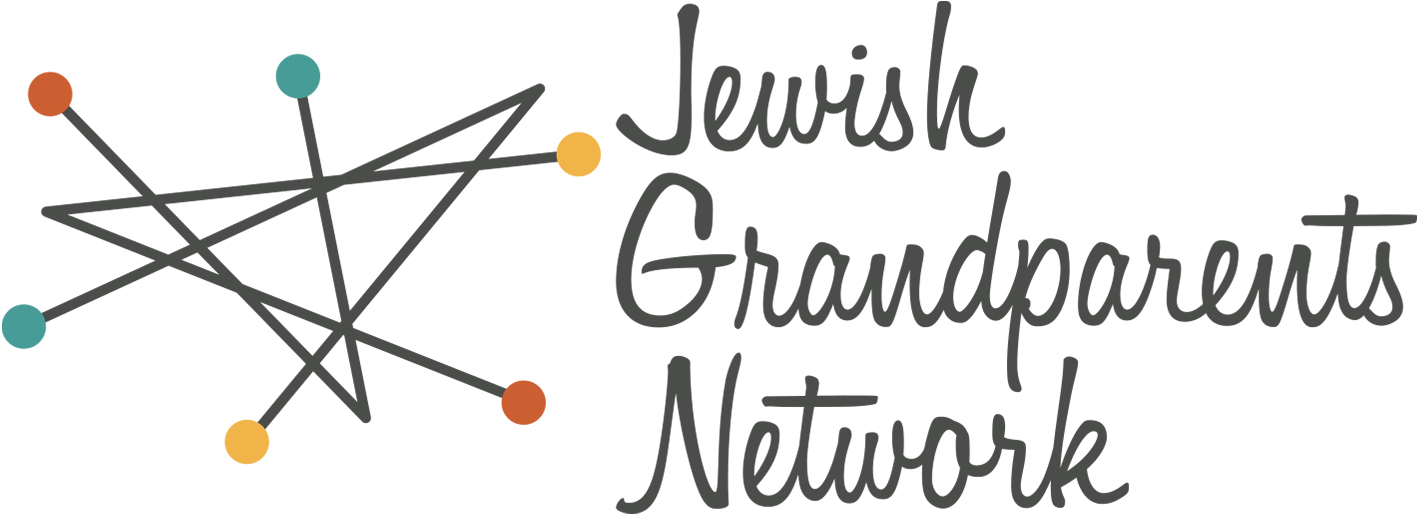
Aug 08 2021 Wonders of Taiglach: Goodness, Gracious, Great Balls of Dough
Ages:
AdultThe sticky, nearly impenetrable mound of dough, nuts, and sweets that was once a fixture of our Rosh Hashanah holiday tables became a shorthand for the joys of the “High Holy Days.” What are today’s taiglach? How do we bring sweetness to our family tables and our lives?
Taiglach. Balls of rock-hard, baked, boiled, or fried dough seeped in honey accompanied by walnuts and unnaturally red candied cherries. They were not to be cut but rather pulled upon, the glutinous orbs, nuts, and cherries grudgingly dislodged one by one until all that remained was a half-inch coating of honey stuck to the cardboard tray.
As a child, I didn’t particularly like taiglach. They certainly couldn’t hold a candle to honey cake, let alone Ring Dings or Devil Dogs. But each year I looked forward to peeling off the balls of honey-infused dough with delight. My memories of taiglach are profoundly tactile: the stickiness of the honey, the demanding crunch of the dough, the otherworldly hue of the cherries. These images evoke broader memories of the High Holidays of my youth.
As a child, Rosh Hashanah and Yom Kippur loomed large in my life; beyond the three days of Yontif, it was a distinct period of the year. It was truly the High Holyday Season. As the days turned cooler and leaves took on shades of yellow and red it was time to purchase my annual new sports jacket and accompanying slacks, shoes, and tie. We all got haircuts. The week before the Holy Days, my mother called in our High Holiday order to the bakery on Springfield Boulevard—multiple round challahs, honey cake, mandel bread, and taiglach. After a Rosh Hashanah chicken or pot roast dinner with my grandparents, the mesa of taiglach would be placed in the center of the table. Extreme crunching ensued.
We sat in the sanctuary for hours on evenings and days of the holidays. As a pre-teen, I stood next to Richard Fruchter, still my friend a half-century later, and sang soprano in the synagogue choir. We cast our eyes down during duchaning, the reciting of the priestly blessing. Dan Kaufman was the featured bass voice, declaring “Y’varech’cha” with his deep resonant voice. What would be the Godly punishment if we peeked? It was great theater and it filled me with awe.
As morning turned to afternoon, children played in the yard behind the synagogue, women convened in the lobby to chat, and men congregated at the shul entrance to talk about sports and smoke Kents and Lucky Strikes. In the afternoon the entire congregation, our Jewish community, walked down Horatio Parkway to Oakland Lake to cast bread and Cheerios into the water to atone for our sins.
What are today’s taiglach? What is the food, the awe-inspiring moment, the great theater, the community ritual that will create joy-filled memories for our children and grandchildren? The COVID-19 Pandemic will be forever engraved on the souls of today’s children. Perhaps this isn’t all bad. Marshall Duke tells us that difficult times create “oscillating narratives” that promote emotional resilience. But there needs to be more. How can we ensure that our children’s futures are blessed with memories of family and community that evoke joy, wonder, awe, and delight? It is up to us, grandparents, parents, aunts and uncles, friends, and neighbors to create these sacred moments that will enrich our children’s souls for a lifetime. Honey-infused taiglach are a start.
Our love and best wishes for a Shanah Tovah U’metukah—a happy, healthy, and sweet New Year.
P.S. What is your favorite taiglach recipe? Click HERE for a link to a recipe from Jamie Geller’s website:
David Raphael is CEO and Co-Founder of the Jewish Grandparents Network.



 We use technologies like cookies to remember your preferences. Consenting to these technologies will provide you with a better browsing experience. JGN never shares information about your use of our website.
We use technologies like cookies to remember your preferences. Consenting to these technologies will provide you with a better browsing experience. JGN never shares information about your use of our website.